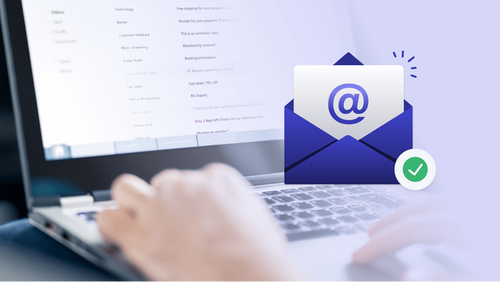In the world of web development, forms are the gateway to collecting valuable user data. Whether you're building a contact form, registration page, or subscription form, one critical aspect is ensuring the validity of email addresses. In this comprehensive guide, we'll explore the art of email validation in forms, equipping you with the knowledge and techniques needed to build user-friendly, data-rich web applications.
Chapter 1: The Importance of Email Validation
Before we delve into the technical aspects, it's crucial to understand why email validation is essential for web forms. We'll discuss data accuracy, user experience, and security implications.
Chapter 2: Basic HTML Form Elements
We'll start with the basics, introducing HTML form elements and demonstrating how to create simple forms. Understanding these fundamentals is vital for effective email validation.
Chapter 3: HTML5 Email Input Type
Learn about the HTML5 email input type, a powerful tool that simplifies email validation. We'll explore its attributes and capabilities.
Chapter 4: Client-Side Validation
Discover how to implement client-side email validation using HTML attributes and JavaScript. We'll discuss the required attribute and custom validation techniques.
Chapter 5: Advanced Email Validation
Delve deeper into email validation by exploring advanced techniques, including regular expressions. We'll provide code examples and best practices.
Chapter 6: Server-Side Validation
Understand the importance of server-side email validation and learn how to implement it using your preferred server-side language.
Chapter 7: Real-Time Validation
Learn how to provide real-time validation feedback to users as they fill out forms. We'll cover JavaScript integration and user experience improvements.
Chapter 8: International Email Addresses
Handling international email addresses can be tricky. We'll discuss techniques and libraries for validating email addresses globally.
Chapter 9: Security Considerations
Explore the security aspects of email validation, including protecting against email injection attacks and ensuring user data privacy.
Chapter 10: Best Practices
We'll summarize the best practices for email validation in forms, helping you create robust and user-friendly web applications.
Chapter 11: Common Questions
Q1: Can I rely solely on client-side email validation?
We'll discuss the limitations of client-side validation and why server-side validation is essential.
Q2: How do I use regular expressions for email validation?
Learn the basics of regular expressions and how to apply them to email validation.
Q3: Are there any libraries or plugins for email validation?
Explore popular libraries and plugins that simplify email validation in forms.
Q4: What are some real-world examples of email validation in forms?
We'll provide real-world examples and code snippets for email validation.
Q5: How can I ensure cross-browser compatibility for email validation?
Discover strategies to ensure that your email validation works consistently across different web browsers.
Conclusion
Mastering email validation in forms is a fundamental skill for web developers. It ensures data accuracy, enhances user experience, and strengthens security. This ultimate guide equips you with the knowledge and techniques needed to implement effective email validation in your web forms. Whether you're a novice or an experienced developer, creating user-friendly and data-rich web applications starts with mastering email validation.



